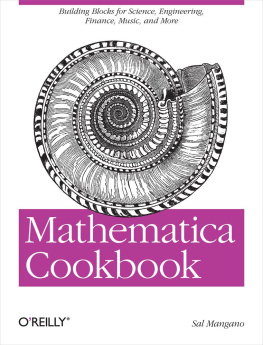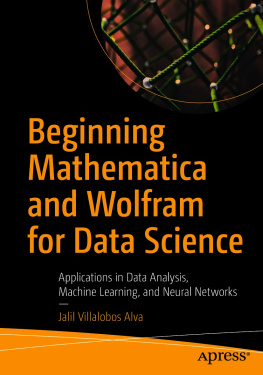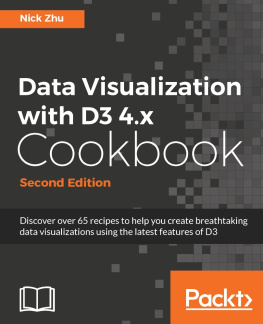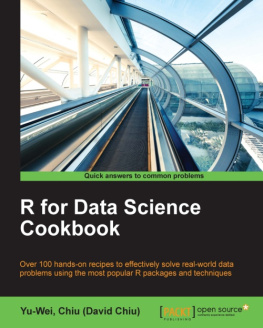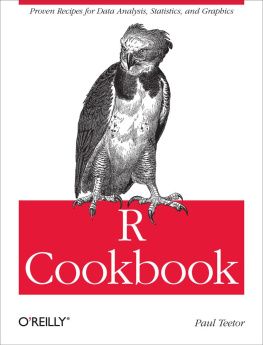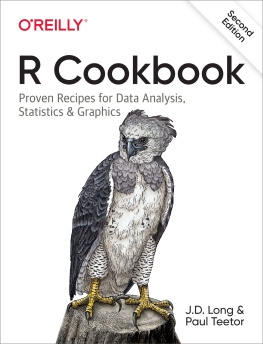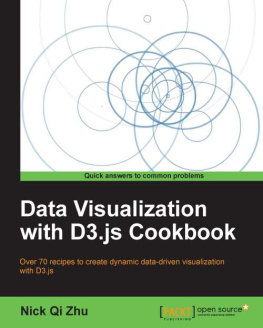Mangano - Mathematica Cookbook
Here you can read online Mangano - Mathematica Cookbook full text of the book (entire story) in english for free. Download pdf and epub, get meaning, cover and reviews about this ebook. year: 2010, publisher: OReilly Media, genre: Home and family. Description of the work, (preface) as well as reviews are available. Best literature library LitArk.com created for fans of good reading and offers a wide selection of genres:
Romance novel
Science fiction
Adventure
Detective
Science
History
Home and family
Prose
Art
Politics
Computer
Non-fiction
Religion
Business
Children
Humor
Choose a favorite category and find really read worthwhile books. Enjoy immersion in the world of imagination, feel the emotions of the characters or learn something new for yourself, make an fascinating discovery.
- Book:Mathematica Cookbook
- Author:
- Publisher:OReilly Media
- Genre:
- Year:2010
- Rating:3 / 5
- Favourites:Add to favourites
- Your mark:
- 60
- 1
- 2
- 3
- 4
- 5
Mathematica Cookbook: summary, description and annotation
We offer to read an annotation, description, summary or preface (depends on what the author of the book "Mathematica Cookbook" wrote himself). If you haven't found the necessary information about the book — write in the comments, we will try to find it.
Mathematica Cookbook helps you master the applications core principles by walking you through real-world problems. Ideal for browsing, this book includes recipes for working with numerics, data structures, algebraic equations, calculus, and statistics. Youll also venture into exotic territory with recipes for data visualization using 2D and 3D graphic tools, image processing, and music.
Mathematica Cookbook — read online for free the complete book (whole text) full work
Below is the text of the book, divided by pages. System saving the place of the last page read, allows you to conveniently read the book "Mathematica Cookbook" online for free, without having to search again every time where you left off. Put a bookmark, and you can go to the page where you finished reading at any time.
Font size:
Interval:
Bookmark:

Beijing Cambridge Farnham Kln Sebastopol Tokyo
To Wanda, Leonardo and Salvatore: My life would not compute without you.
for more information on this offer!
Please note that upgrade offers are not available from sample content.
If you were stranded on a desert island with only your laptop (and presumably a large solar panel), what software would you want to have with you? For me the answer definitely includes the latest version of Wolfram Mathematica. Whether you are a scientist, engineer, or mathematician, a Wall Street quant, a statistician or programmer, or even an artist or musician, you will be a better one if you have this tool at your disposal. Of course, having a tool and knowing how to use it well are quite different things. That is why I wrote the Mathematica Cookbook .
I am a big fan of OReilly cookbooks, as these books are designed to help you solve real-world problems. Mathematica is an ideal candidate for a cookbook because it is so vast, deep, and full of traps for the novice. I was ecstatic to learn that OReilly was looking to publish a Mathematica cookbook and even more excited when I was chosen to be its author. I have been a user of Mathematica since version 3.0. Although that was over 13 years ago, I still remember the frustration of trying to solve problems in this system. I dont mean this in a derogatory way. The frustration a newbie experiences when trying to learn Mathematica comes from the knowledge that you are sitting in front of a highly advanced computational platform that eventually will magnify your productivity tenfoldif you can only wrap your mind around its unfamiliar idioms. If you are a new (or even not-so-new) user of Mathematica today, you are simultaneously in a better and a much worse position than I was with version 3.0. You are in a better position because Mathematica 7.0 is vastly more powerful than 3.0 was back then. Not only has the number of available functions doubled, but Mathematica has fundamental new capabilities including dynamic interactivity, curated data sources, parallel processing, image processing, and much more. You are in a worse position because there is much more to learn!
As Mathematica grows, it remains largely unchanged in its core principles. This book is designed to help you master those core principles by presenting Mathematica in the context of real-world problems. However, my goal is not just to show you how to solve problems in Mathematica, but to show you how to do so in a way that plays to Mathematicas strengths. This means there is an emphasis on symbolic, functional, and pattern-based styles of programming. Mathematica is a multi-paradigm programming language; you can easily write code in it that a Fortran or C programmer would have little trouble following. However, the procedural style that this entails is not likely to give you good performance. More importantly, it will often cause you to write more code than necessary and spend more time adapting that code to future problems. Stephen Wolfram has said that a correct Mathematica program is often a short Mathematica program. There is much truth to this. The truth comes from the idea that good Mathematica programs leverage the capabilities of the vast built-in library of both general-purpose and highly specialized functions. Programming in Mathematica is a search for the right combination of primitives. My hope is that this cookbook will play a role as your guide.
One risk of authoring a cookbook is that it is almost inevitable that something someone finds important will be left out. With Mathematica, this risk is a certainty because even as I wrote the book, Mathematicas capabilities grew. However, even if you drew a line at, say, version 6.0, you would find that there are still many topics that I do not cover in the book, for various reasons. To remedy this and to create a living resource that I hope the Mathematica community will help nourish, I am launching http://mathematicacookbook.com . Here you will find recipes that did not make it into this book, and more importantly, you will be able rate recipes, contribute your own, or provide alternative implementations to those found in the book or on the site.
The Mathematica Cookbook is not necessarily meant to be read from start to finish like a conventional book (although you are certainly welcome to do so!). Having said that, the chapters are organized in a purposeful way. cover important techniques, extensions, and tools that make Mathematica unrivaled as a technical software development tool.
covers numerics. For the most part, Mathematica simply does the right thing when computing numeric results, as you would expect. In pure mathematics, numbers are formal objects that are well behaved, but when you represent numbers in a finite discrete device like a computer, often you will need to understand issues of precision and accuracy in order to get reasonable results on certain classes of problems. Further, numbers have different representations in Mathematica (Integers, Rationals, Complex, and some exotic types like Intervals). Then there is an issue of input and presentation: Mathematica supports different base representations and different display formats. This chapter has recipes that cover all these issues, and it is wise to have some familiarity with them before using any of the numeric algorithms.
Functional programming is a style of Mathematica development that most seasoned users prefer. dives deeply into functional programming, Mathematica style. Because Mathematica was designed to support multiple development paradigms, its functional programming abilities are not as pure as languages like Haskell. This is actually a big plus, because if you are using Mathematica chances are you are solving a problem, and its the solution rather than the aesthetics that is foremost in your mind. Mathematica programmers prefer the functional style because it leads to efficient programs. It also leads to elegant programs. In the context of programming, elegant means the combination of brevity, power, and clarity. There is an amazing sense of intellectual satisfaction that comes from finding a concise functional solution, and this feeling creates the positive feedback that will draw you into Mathematica. However, this style is often mysterious to people who come to Mathematica from other languages like Fortran, C, MATLAB, or Microsoft Excel. I think this chapter will help you discover the rewards of the functional style.
presents Mathematica data structures, which are largely built on the foundation of lists. From lists, Mathematica derives matrices and higher order tensors, sparse matrices, and more. Knowing how to manipulate these structures is essential for almost any application of Mathematica. This is obvious if you are doing linear algebra, but list processing is integral to almost every facet of use. This chapter also shows how to implement other types of data structures, such as a dictionary that leverages the fast associative look-up that is part of Mathematicas evaluation engine.
Pattern-based programming revolves around pattern matching and transformation. introduces Mathematicas rich pattern-based techniques. Patterns are not a feature of most mainstream languages, but they are tremendously powerful and essential if you hope to accomplish anything nontrivial in Mathematica. Of all the techniques at your disposal, pattern matching and replacement is the one most likely to yield the "wow" reaction you get when you see a seemingly simple looking piece of code do something not so simple. To whet your appetite, here is one of my favorites.
Font size:
Interval:
Bookmark:
Similar books «Mathematica Cookbook»
Look at similar books to Mathematica Cookbook. We have selected literature similar in name and meaning in the hope of providing readers with more options to find new, interesting, not yet read works.
Discussion, reviews of the book Mathematica Cookbook and just readers' own opinions. Leave your comments, write what you think about the work, its meaning or the main characters. Specify what exactly you liked and what you didn't like, and why you think so.

